C-17 Globemaster Airdrop: Precision, Discipline, and Safety
On the heels of touring the USNS Mercy, attending the opening of the RIMPAC 2010 exercise then enraptured by the arrival of Hawaii’s first F-22 Raptors, I had the fortune of flying on a C-17 Globemaster as it performed a simulated airdrop over the Big Island. During these events, my style is to observe and soak in the experience. What definitely left an impression and was clearly evident was the precision, discipline, and safety of our Pacific Air Forces crew.
After receiving the PACAF Command overview and safety briefing, the group was transported to the awaiting Globemasters. Inside this massive flying machine, the Loadmasters were meticulously inspecting the airdrop cargo. Watching them check the heavy equipment airdrop system was like watching an intricate performance. Front to back, side to side, pallet to pallet, the Loadmasters led by Chief Master Sergeant Louis Orrie hovered over the cargo, inspecting, double checking, thoroughly proceeding through their checklists.
Even after crew briefings of the C-17 capabilities and overview of our flight, the Loadmasters rechecked their work after one of the civilians touched or went nearby the cargo. Safety and a successful mission were paramount.
All that preparation was evident as the heavy cargo cleanly exited the plane and began its safe descent to the designated drop zone all within 30 seconds.
After the airdrop were fantastic photo opportunities as our C-17, designated Lava 31, made a second pass with its cargo door open. Staff Sergeant Lucas Crumpton and Senior Airmen Danny Hollister oversaw the safety of the passengers and tethered photographers and videographers for their coverage looking out the cargo bay.
We landed on the Big Island for a few minutes then I had a turn to sit in the C-17 cockpit as it took off behind companion C-17, Lava 32. The instrumentation in the cockpit was overwhelming.
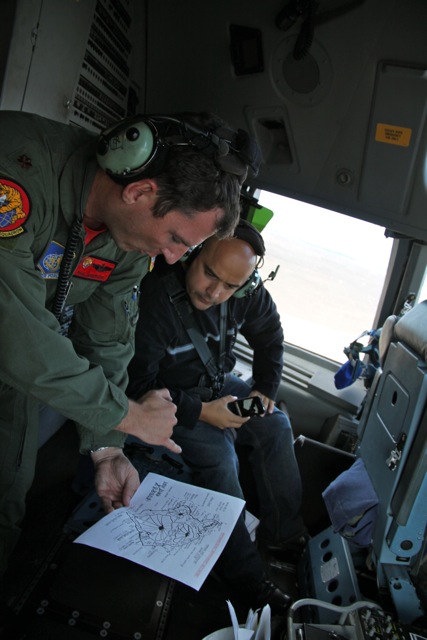 While Major Paul Anderson outlined our flight plan, experienced Captain Alan Partridge turned dials, flipped switches, took the flight stick and in a matter of minutes, we were effortlessly airborne. For such a huge aircraft, the flight of the Globemaster felt smooth and surprisingly nimble.
While Major Paul Anderson outlined our flight plan, experienced Captain Alan Partridge turned dials, flipped switches, took the flight stick and in a matter of minutes, we were effortlessly airborne. For such a huge aircraft, the flight of the Globemaster felt smooth and surprisingly nimble.
What else caught my eye (and ear) was the constant communications the crew had with each other. Be it face-to-face talks, discussions on the aircraft’s intercom system, or with hand signals and gestures, the crew remained in concert with constant updates. In the cockpit, focused pilots participated in these discussions along with all the other chatter of the sky. The voices from the control tower, nearby aircraft, and audio warnings overlaid the humming drone of the C-17’s engines.
As a late addition to our flight was the intercept and escort by four F-16 fighter jets. As we made our way back to Honolulu, these jets approached from the sides then took formation behind Lava 32. Wow!
This was an absolutely remarkable and unforgettable experience to witness first hand all the work, man hours, and coordination required to keep our Air Force personnel trained and prepared to defend our nation. Thanks to Pacific Air Forces and the personnel who demonstrated the utmost precision and discipline for a successful mission and ensured the safety of its passengers.
A video collage of the airdrop including the C-17 taking off and the F-16 intercept.
See more pictures from the C-17 Airdrop.
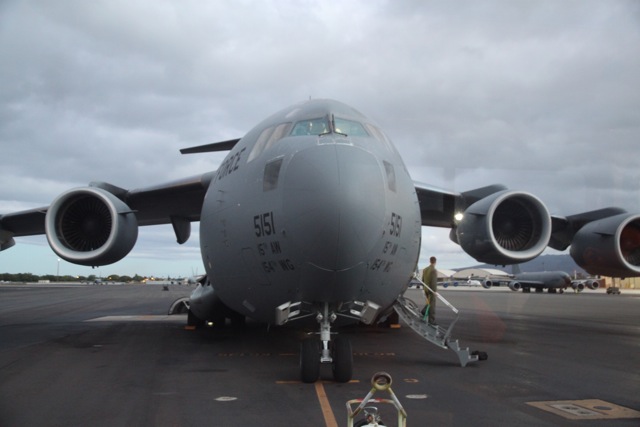
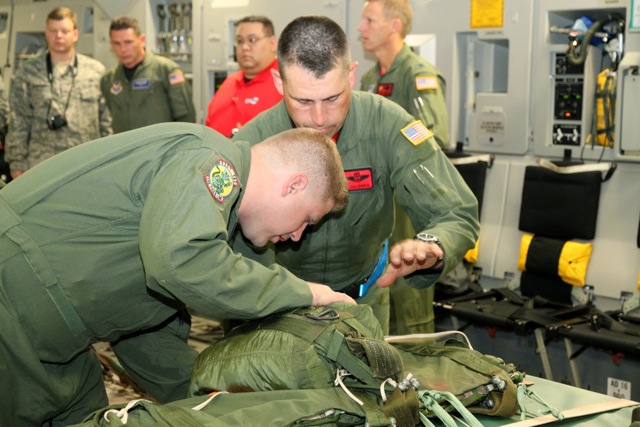
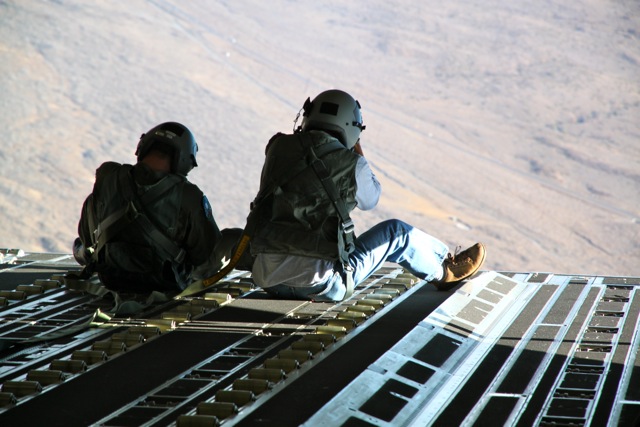
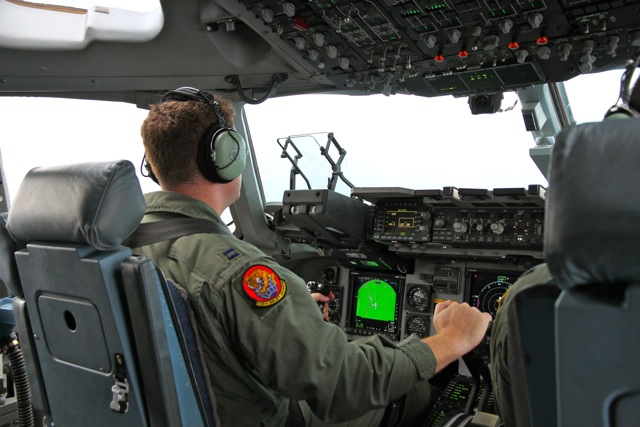
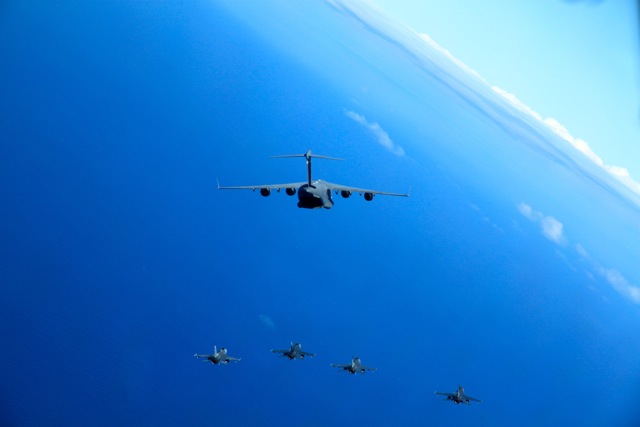
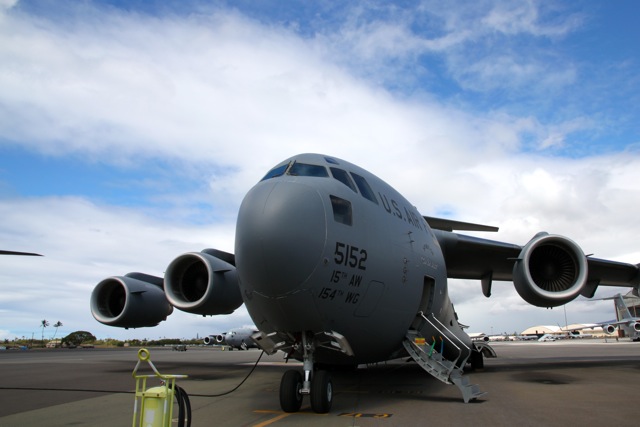
Tweets that mention C-17 Globemaster Airdrop: Precision, Discipline, and Safety - Pulpconnection -- Topsy.com
July 18, 2010 @ 3:10 pm
[…] This post was mentioned on Twitter by Gee Why, Pulpconnection. Pulpconnection said: Fresh and Pulpy: C-17 Globemaster Airdrop: Precision, Discipline, and Safety http://pulp.ly/o4 […]